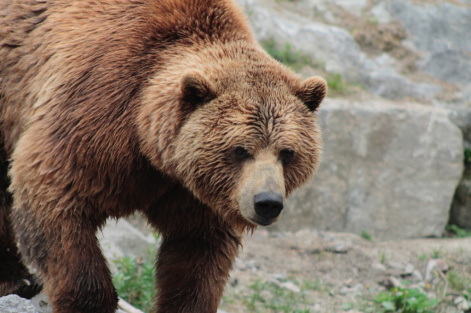Scientists have figured out the reasons for the conflict between bears and people
8 July 2019 г.

Bans on hunting, as well as measures to protect brown bears allowed them to restore their population and expand their habitat around the world. Now on the planet there are about two hundred thousand brown bears, and about a hundred thousand of them live in Russia. Bears and people often live in the same area. To minimize conflicts between humans and bears, it is important to examine and understand the circumstances leading to the attacks of predators.
Several tens of scientists from twenty countries analyzed and described the main circumstances of the bears' attacks on people, revealed common features and peculiarities of conflict situations. Researchers examined what caused predator attacks, what time of year and day they occurred more often, and what it was connected with. Based on their observations, scientists formed recommendations to reduce aggression from bears and noted the fundamental importance of informing the public about the rules of behavior in the wild when coming face-to-face with large predators.
We analyzed data on 664 attacks of brown bears on people from 2000 to 2015 around the world. Most (almost 90%) of these attacks resulted in injuries to people, every tenth ended with the death of the victim. Approximately half of the attacks took place in summer, most often during the daytime. It is noted that in all the cases the attacks occurred in the wild. Researchers believe that this is due to the expansion of cities in the direction of the natural habitats of animals. It is also noted that people have become more mobile and are increasingly having a rest in the countryside, in natural parks and reserves. People actively using wildlife increases the risk of meeting wild animals. Television programs about our younger brothers and their assumed harmlessness is in favor of this tendency.
The most common scenario of brown bear attacks is coming face-to-face with a female and its cubs, they account for half of all the attacks. It is the females protecting their offspring, that tend to react aggressively to people. In addition, bears with older cubs most often come to populated areas in search of food. The remaining cases of aggression, with their frequency decreasing, include sudden meetings (20%); attacks provoked by a dog (17%) or shots and wounds during hunting (10%); attacks due to the search of food (5%). Sometimes scenarios can be complex and involve several factors. For example, the interaction of a female with cubs and a dog.
The distribution map (blue areas) of brown bears and their attacks on people (red dots) documented over the last 15 years. Source: Scientific Reports, 9, Article number: 8573 (2019)
The scientists concluded that most of the attacks were triggered by improper and dangerous behavior of people. To reduce the number of dangerous meetings with animals, the researchers provided several recommendations. For example, it is strictly forbidden to visit the reserves with dogs. Researchers strongly advise not to make trips to wild places alone and, though those who prefer silence in nature would not like it, to make as much noise as possible. Loud sounds warn the predator about the presence of people, which prevents unexpected meetings. Bears avoid large crowds. Predators run away more often than attack when confronted with a group.
It was noted that in order to reduce dangerous situations, it is important to raise public awareness about the rules of behavior in the wild and when encountering predatory animals.
“Bear is considered to be one of the most clever and dangerous animals. Usually, he does not attack without provocation from human. We believe that we need to learn more about coming face-to-face with bears, causes and factors leading to them, in order to subsequently minimize the tragic scenarios. For this we need to educate society, tell people what to do. For example, in the bears habitat, it is important to make noise so that the animal knows about the presence of man, not to be “abruptly scared”. When coming face-to-face with the animal, it is important not to run away in order not to wake up their predator instincts. It is necessary to continue to make noise and pretend to be dreadful, while retreating to a safe distance, ” says the co-author of the study, Alexander Shishikin, Doctor of Biological Sciences, Head of the Laboratory of Technogenic Forest Ecosystems of the V.N. Sukachev Institute of Forest KSC SB RAS.
The researcher notes that the demonstration behavior of a bear suggests its desire just to scare away. But if a bear started to pursue a person - secretly approaching, guarding, that is, behaving like a predator, one should expect an attack. In such cases, you do not need to wait for the tragedy, but it is worth shooting dangerous animals.
The authors of the study separately discuss the role of the media in the process of informing the public. Bears, in particular their attacks on people, attract increased attention. The reaction of the media entails the reassessment of the risk and causes the negative public reaction and opposition to nature-oriented actions. The scientists note that such an approach often results in useless troubles for the public and does not aid in correctly informing people about how to avoid coming face-to-face with large predators and how to behave if this happens. Researchers suggest that journalists provide objective data and release scientifically based information about bears and rules of behavior when meeting with them. According to the scientists, it is the understanding of the circumstances causing bears to attack, and informing the public that can contribute both to the safety of people and protection of predatory animals.
Share:
